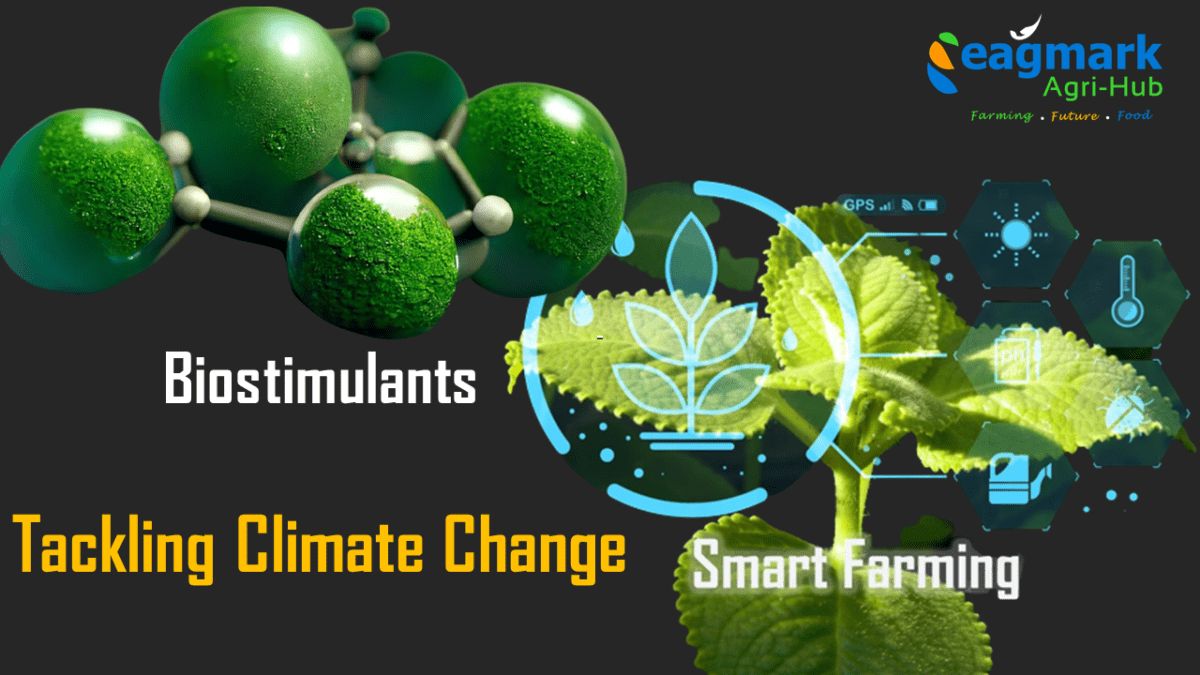Navigating the Challenges of Climate Change in Agriculture: The Role of Biostimulants and Climate Smart Farming

The agriculture industry is feeling the effects of climate change, which includes invasive pests, droughts, intense weather events, and reduced crop yields. This has led growers to seek alternate means of protecting crops and increasing output while keeping the bottom line healthy.
The aim of Climate Smart Farming is to help growers adapt to and manage the risks associated with the changing climate, while creating more resilient, healthier, productive acreage to help sustainably feed a growing world population.
One of the ways growers can make their crops resilient to climate shifts and increasingly significant abiotic stressors is through biostimulants. These products are made up of naturally occurring components and help plants endure stress from drought to temperature to soil conditions. Stressed plants require more inputs to reach a desirable yield, which in turn turns up the pressure on the environment through increased nitrogen use and greenhouse-gas-producing manufacturing and shipping methods.
You may also want to read about: Antibiotic Overuse in Farming Threatens Human Immune System
Many biological companies have been targeting specific ‘stress points’ in the agronomic cycle. Products that improve cold tolerance and increase the speed of root extension into the soil are valuable, as are those that target heat stress, wind stress, and drought stress. The industry is focusing on designing products around agronomic needs, with the goal of getting a plant through the existing climate event. However, almost all of these products are designed to mitigate a stress and will only have value when applied prior to the stress.
The Plant Growth Regulator (PGR) Impasse
The agricultural industry is also facing a PGR regulatory conundrum, with agencies responsible for regulating and enforcing laws related to environmental protection – such as the National Environment Management Authority (NEMA) in Kenya or the Environmental Protection Agency (EPA) in the US – considering anything that acts as a PGR as a pesticide. This occurs because most products containing PGRs were used as herbicides. As a result, any product that regulates plant growth and uses that terminology is at risk of being deemed a pesticide, even if it enhances growth rather than limits it, and even if it’s a naturally occurring substance.
One potential solution to this regulatory conundrum is to establish a separate regulatory framework for biostimulants, which would allow for a more streamlined and efficient approval process. This would require a significant amount of collaboration and advocacy from the agriculture industry, as well as increased funding for research and development to better understand the mechanisms and efficacy of biostimulants.
Capitalizing on Climate Smart Agriculture and Biostimulants
Climate smart farming and the use of biostimulants are promising avenues for growers to adapt to the challenges posed by climate change while improving their bottom line and sustainability. However, it will require a concerted effort from all stakeholders in the agriculture industry to fully realize their potential and overcome the regulatory and technical challenges that currently limit their effectiveness.



